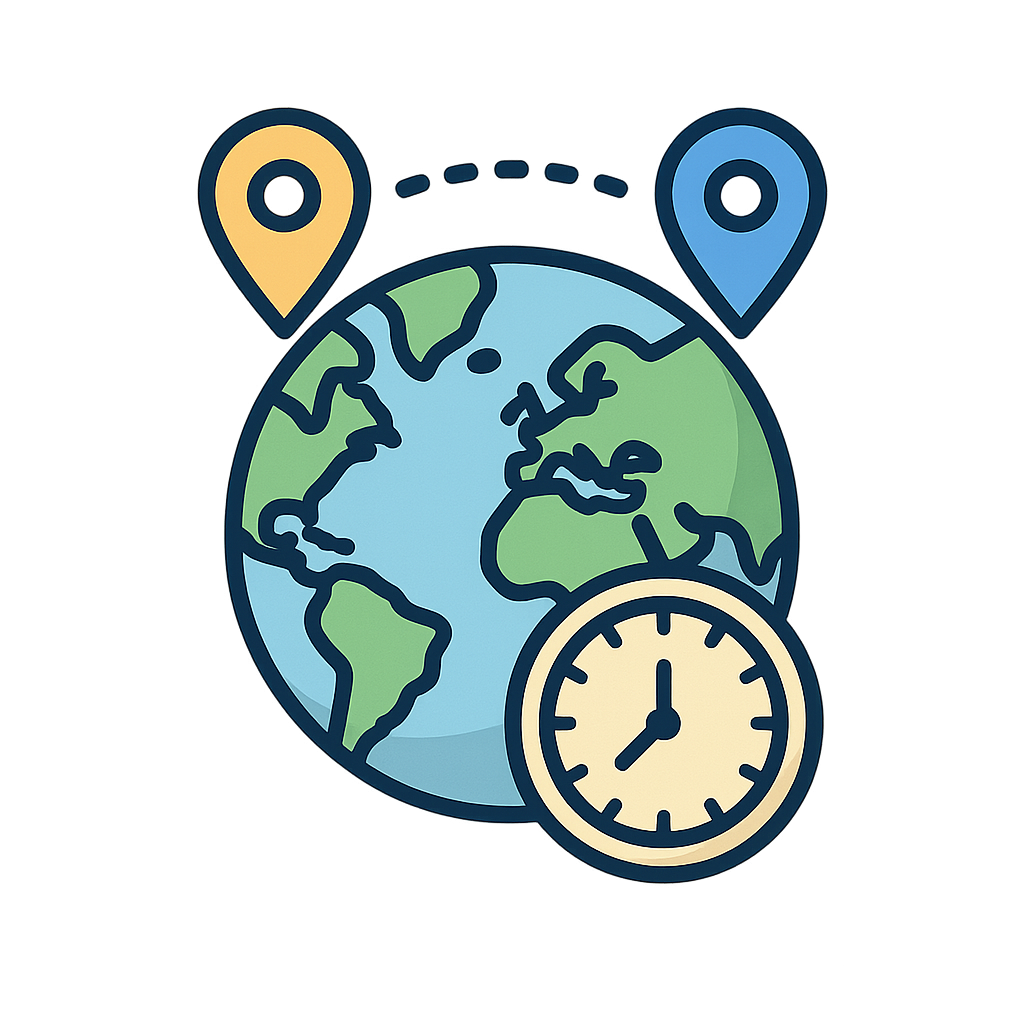The Great Global Clock
Have you ever wondered how it can be lunchtime where you are, with the sun shining high above your head, while a friend across the ocean is just waking up to a rosy sunrise? It’s a sunny puzzle. For someone in Paris, it might be time for an afternoon snack, but in Los Angeles, kids are still sound asleep in the middle of the night. How can it be the same day, but a completely different time? For a long, long time, this wasn't a very big deal. People traveled by horse-drawn carriages or slow-sailing ships, and the world felt enormous. Going from one town to the next was a big adventure, and no one really worried that their clocks were a few minutes different. But something was coming. A chugging, steaming, iron invention was about to race across the land, and it was going to make this sunny puzzle a very big problem indeed. A problem that only I could solve.
That speedy invention was the railroad. As magnificent steam trains began to connect towns and cities, they created a huge, tangled mess. Imagine this: every single town set its clocks by looking at the sun. When the sun was at its highest point in the sky, it was noon. This was called 'local time'. This meant that a town just a few miles down the track could have a time that was three, five, or even seven minutes different. A train conductor would have to be a mathematical genius. The train schedule might say you'd arrive at 2:00 PM, but whose 2:00 PM? The town you left, or the town you were going to? It was a time tangle. One day in 1876, a very clever Scottish-Canadian engineer named Sir Sandford Fleming missed a train in Ireland because of this very confusion. The schedule was printed with one time, but the train left at another. He was so frustrated. "This is nonsense!" he probably thought. "There must be a better way." And right there, his brilliant idea began to form. He imagined the world as a giant orange. What if we divided it into 24 neat, perfect slices? Each slice would be a 'zone,' and everyone inside that zone would agree to use the exact same time. No more guessing. No more missed trains. This idea was so logical and so helpful that leaders from 25 countries gathered for a big meeting in Washington, D.C., in 1884. It was called the International Meridian Conference. After much discussion, they agreed. They made Sandford Fleming’s brilliant idea official, and in that moment, I was born to bring order to the world’s clocks.
So who am I, this grand solution to the world’s time tangle? I am Time Zones. I am the invisible lines that circle the globe, organizing the day for everyone, everywhere. Today, I help the world run like a well-oiled machine. Because of me, you know not to call your cousin in India when you are eating breakfast, because they are probably getting ready for dinner. I allow you to watch a live soccer game happening on the other side of the planet, seeing the action at the very same moment as thousands of other fans. When your family plans a vacation to a faraway place, I help you figure out what time you'll land so you aren't surprised. I make sure pilots, business people, and world leaders are all on the same page. I help bring people together across vast oceans and continents, making our big world feel a little smaller and much more connected, like one giant, well-organized global team.
Reading Comprehension Questions
Click to see answer
